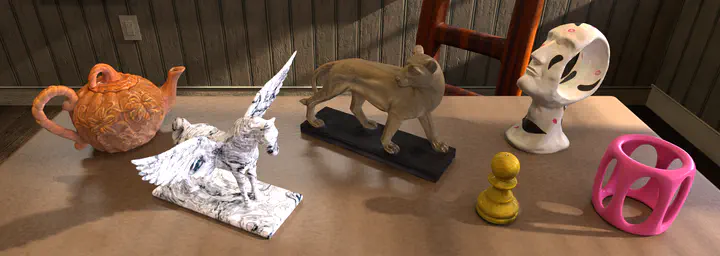Physics-Based Inverse Rendering using Combined Implicit and Explicit Geometries

Abstract
Mathematically representing the shape of an object is a key ingredient for solving inverse rendering problems. Explicit representations like meshes are efficient to render in a differentiable fashion but have difficulties handling topology changes. Implicit representations like signed-distance functions, on the other hand, offer better support of topology changes but are much more difficult to use for physics-based differentiable rendering. We introduce a new physics-based inverse rendering pipeline that uses both implicit and explicit representations. Our technique enjoys the benefit of both representations by supporting both topology changes and differentiable rendering of complex effects such as environmental illumination, soft shadows, and interreflection. We demonstrate the effectiveness of our technique using several synthetic and real examples.